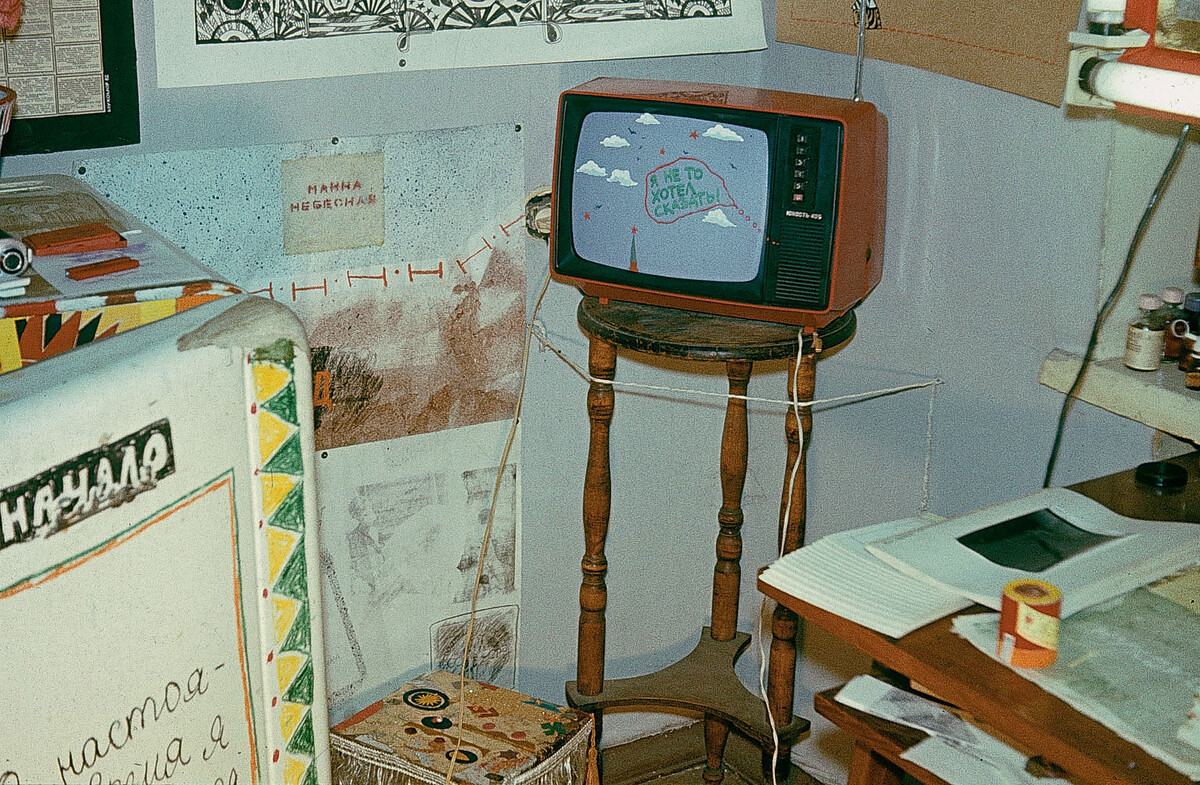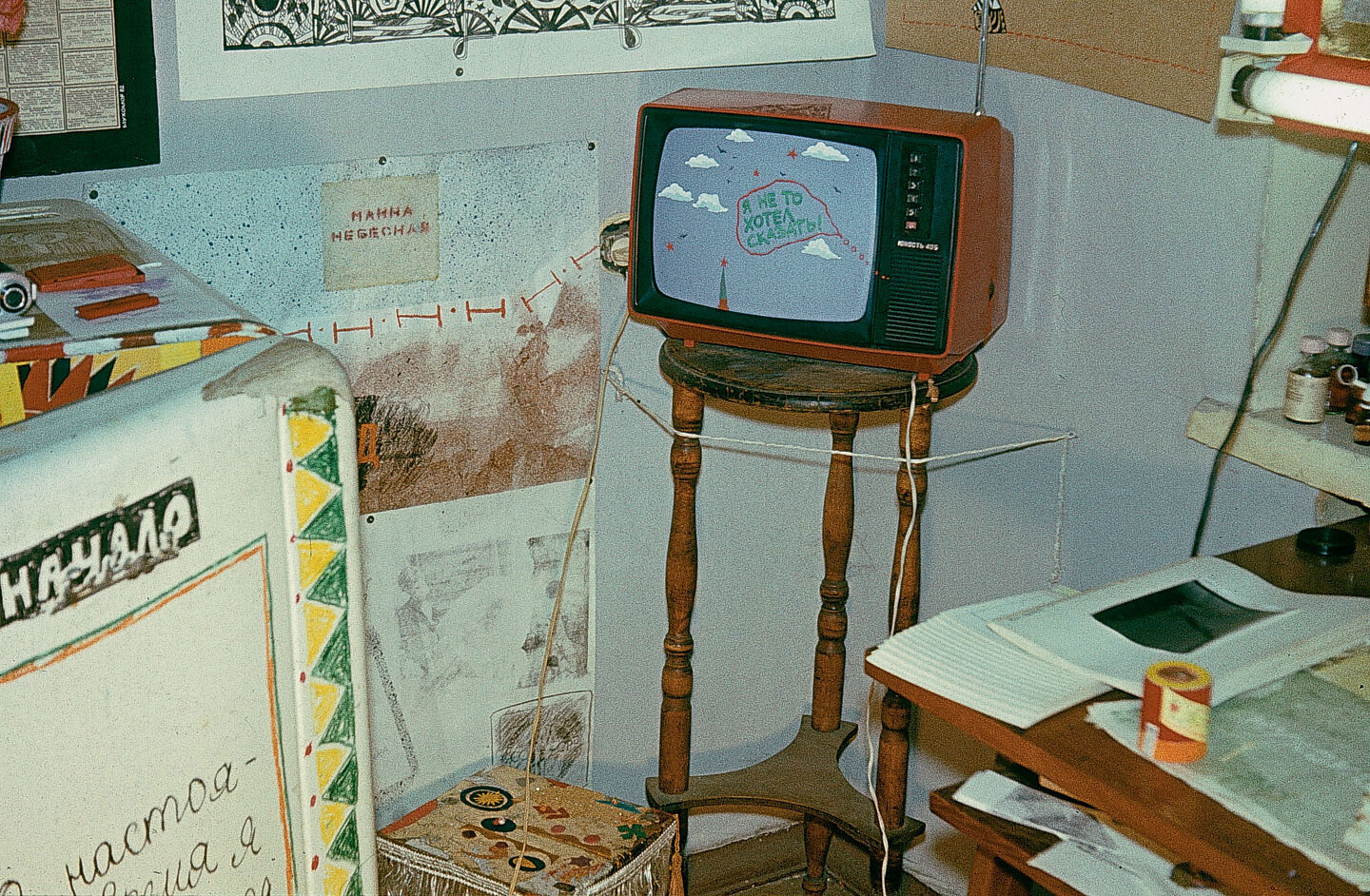A long time ago, thousands of young people from all over the world—mainly from socialist countries, but also from sympathetic countries and from capitalist countries sent by leftist parties—were studying in the USSR. The main aim of our learning experience was to become specialists in disseminating around the world the ideas of Marxism-Leninism. This meant to champion communism, in our case, through Socialist Realism.1
Manuel Alcayde, a young student from Havana, moved to Moscow in 1978 to study painting and stage design. Even though pro-Soviet tendencies were gaining ground within state institutions in Cuba, Cuban Socialist Realism never managed to advance much beyond the level of cultural policy. Some Soviet tutors were working in Cuban art education in the late 1970s, but students joked about the “muddiness” of the official styles they taught (even convincing the tutors to adopt the term, without explaining the meaning, so they would then tell their students to paint “more muddy”).2
Moscow’s art system, however, was still dominated by “official art” and managed through a complex of governmental and professional organizations, associated exhibition spaces, artists’ associations, and awards. During his time in Moscow, Alcayde met a group of young artists who called themselves the Mukhomors (“Toadstools,” specifically the iconic amanita muscaria variety, red with white spots, poisonous and hallucinogenic) and entered the circles of “unofficial” art:
I visited exhibitions, actions, concerts, readings, and participated in tertulias. These events could happen anywhere and everywhere—including the living room of an apartment, a park, a cottage in the countryside, the metro or other outdoor spaces—with the fake excuse of a special occasion, such as a birthday or a welcome party. They were put together within limited budgets and were almost always constrained by legal and political limitations, including extreme political risks.
For artists who worked in ways that were not recognized by the official art system, such tertulias were the primary medium for the circulation of art.
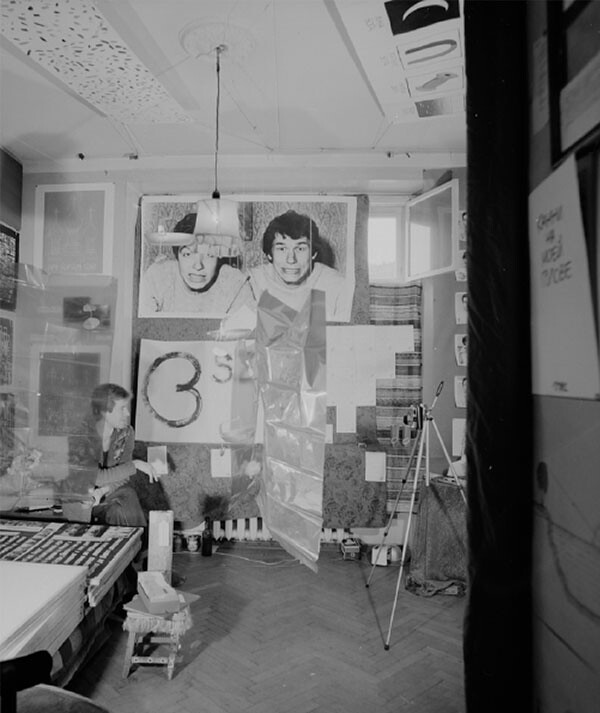

View of the first APTART exhibition, autumn 1982, with Nikita Alekseev. Photo: Georgy Kiesewalter
Between 1982 and 1984, APTART was an artist-to-artist institutionalization of such gatherings in Moscow. A grouping of artists and artist groups, an apartment-exhibition space, a sequence of shows in an apartment and outdoors, a movement and a collective project, APTART’s actions were described by its participants as “working expositions,” “anti-shows,” “exhibition-nonexhibitions,” or—following the Socialist Realist dictum that art must be nationalist in form and socialist in content —as “apartment art” by “nationality.”3 (The latter is an oblique but suggestive description—collapsing the nation-state into the space of an apartment, confounding the identitarian claims of nationality, and leaving the idea of “socialist in content” hanging.) The name is a contraction of “apartment art,” as well as a play on the Russian APT, meaning ART: a kind of stutter, “ART ART,” a repetition of “ART” across Russian and English. APTART may also be seen alongside the other major artists’ initiative in Moscow at that time, the Moscow Archive of New Art (1981–86), a collaborative archive which also marked a self-reflexive moment in the city’s experimental lineage. Nikita Alekseev, in whose apartment APTART began, sees no great significance in what they did, and certainly this example of self-organization among artists is one small part of a vast web of “unofficial” activity in Moscow and beyond. But such micro-experiments in collective time and space hold important lessons for the present.
APTART was not the first organization of apartment exhibitions in the Soviet Bloc but it was among the last. With state institutions given over entirely to “official” artists, the presentation of art in homes and off-spaces was relatively widespread, especially from the 1960s and ’70s onwards. In 1976, a group of artists in Odessa produced a questionnaire, asking: “1) what is your view of apartment exhibitions?; 2) what artists shown are of most interest to you?; and 3) what characterizes your own work?” For these artists, there was no alternative to showing in apartments: “official art exhibitions made no room for artworks that resulted from a strong inner drive to explore the language of art for its own sake.”4
The history of official and nonofficial art is complex and uneven. The level of prohibition or relative flexibility varied considerably depending on region and prevailing political conditions. Unofficial art was united by what it was not (“official art”), but beyond that, few generalizations can be sustained. Some artists identified as “dissident” or explicitly “anti-Soviet,” but many more were pointedly apolitical or held more nuanced positions between the two. As for all Soviet citizens, there was a provision of free education, heating, and paid holidays, and most “unofficial” artists were employed by the state (as teachers, or more exceptionally in creative professions such as illustration and book design). Despite widespread antipathy towards the state, its provision of basic needs—and significant amounts of free time—were not unhelpful to artists. Often the nonofficial spaces that supported nonconformist culture were also state institutions, just not those of the art system.


View of the first APTART exhibition, autumn 1982, with works by TOTART, Mikhail Roshal, and SZ.
The commitment to Socialist Realism may be traced to a 1932 speech given by Stalin to a group of writers in the Moscow home of Maxim Gorky: “The artist must give first priority to the truthful presentation of life, and if he truly portrays our life, then he cannot but note, cannot but show, that it leads to socialism. This will be Socialist art. This will be Socialist Realism.”5 Two years later, in August 1934, Socialist Realism would be institutionalized at the First All-Union Congress of Soviet Writers. If Stalin’s speech launched one of art’s trajectories through the twentieth century, his future Cold War rivals were consolidating something similar through institutions such as the Museum of Modern Art and the Central Intelligence Agency. This narrative also began in domestic or private spaces, with the office of Alfred Barr in Manhattan and Gertrude Stein’s salon in Paris taking the place of Gorky’s Moscow home.6
The subsequent conflicts between these narratives forged in domestic spaces would be played out in the celebrated Cold War binary between realism and expressionism, prefigured already by Georg Lukács’s famous attacks, throughout the 1930s, on modernist, expressionist, and abstract aesthetics. US expressionism, for its part, aggressively sought ground in other geopolitical blocs, including the former East; notable here is the 1959 American National Exhibition in Moscow (with Jackson Pollock, Willem de Kooning, and Mark Rothko, among others). By the early 1980s, New York was the center of a rapidly expanding commercial art system in its boom years, at that time dominated by neo-expressionist painting.
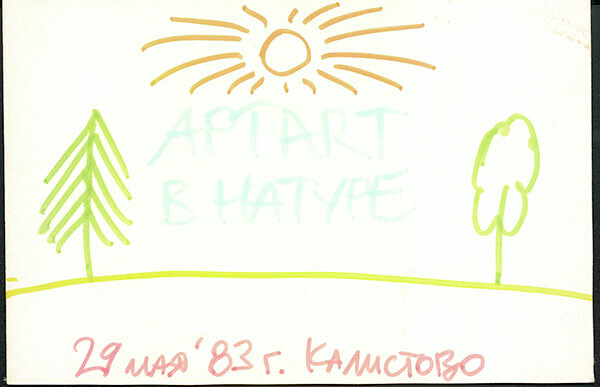

Invitation to “APTART en plein air,” May 1983. Courtesy of the Margarita and Victor Tupitsyn Archive.
But the vast web of apartment actions and other “unofficial” activities—of which APTART’s anti-shows form one small part—unravels these epic conflicts even as they suggest minor ways in which their elements might be given a new shape. The practices around APTART were as far from the “official” Moscow art system as they were from the “official” emanations of Reagan-era neoliberalism: “the new spirit in painting,” Julian Schnabel, and the rest of the ascendant, most-valued art-products. Natalia Abalakova and Anatolii Zhigalov wrote a kind of “press release” for the first anti-show, in autumn 1982:
This event is not an exhibition, and certainly not a private showing. It is an artist’s apartment where his artist friends have gathered to do collaborative work. And those who have gathered are in no way a unified group. These individuals are too different for that. This is, rather, a direction or a movement. The only unifying factor among all is a certain common tendency, a tendency that distinguishes these artists from the vanguard Russian artists of the 1970s who remain within the bounds of traditional art. The artists gathered here destroy the borders between commonly held notions of art and lived reality, and between the artist and the spectator. They approach the “art product” itself in a completely different way. Working on the hypothetical borderline between art and life, they investigate the problem of this “borderline,” analyzing the very essence of the artistic phenomenon. They are interested in the mechanism of art, its structure, its function in life and in society, its ability to communicate, to teach, to engage, its ability to create distance, its social aspects, etc. The question is directed to the artist himself. It dethrones the myth of the artist as demiurge, an inscrutable lone genius. All models and conceptions are reevaluated. But this is not analysis in the usual sense. It is above all action, creative realization.
APTART followed a period of isolation or atomization within the local art community. As Sven Gundlakh wrote at the time, “the main thing is, in my opinion, that not long ago there was nothing—and then suddenly there was—and is—something.”7 Younger artists had come of age via the “Moscow Conceptual” tradition: they joined the seminars with Ilya Kabakov, Erik Bulatov, Ivan Chuikov, Boris Groys, and many others, were taught by Komar and Melamid. With Andrei Monastrysky, Lev Rubinstein, and Georgy Kiesewalter, Alekseev was a founding member of the Collective Actions group, who from 1976 organized ephemeral, mystical “empty actions” in rural or marginal areas around Moscow for invited groups of participant-observers. APTART repeated the longstanding practices of informal gatherings by nonofficial artists, reflecting on and developing the continuous discussions that connected three generations of Moscow artists between the 1960s and ’80s. But it also fought against this lineage—moving away from meticulous analysis and documentation, another characteristic of Collective Actions’ work, and attempting to open out the relatively closed conceptualist circles. As Alekseev explains: “the meetings at Kabakov’s studio were very quiet, intellectual, not everybody was allowed to come—it was very highbrow. APTART was more like a nightclub.”
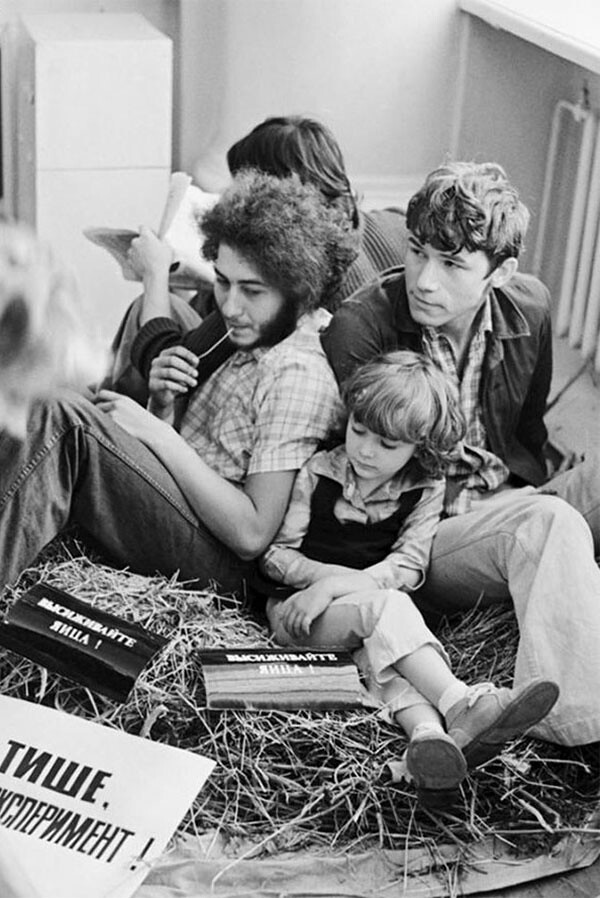

Mikhail Roshal, Victor Skersis, and Gennadii Donskoi performing Hatch Eggs! Photo: Igor Palmin. Courtesy of Igor Palmin.
There were around ten anti-shows, as well as actions and performances, during APTART’s short existence. For the first show, Alekseev’s small living space was bisected by banners and hangings, works filling every available surface (he slept in an inflatable dinghy as there was no space in the bed) and covering the walls and ceiling. There were piles upon piles of texts and literary objects—something to read almost everywhere, from Alekseev’s book I Do Not Like Contemporary Art to book objects by Nikolai Panitkov, but no clear narrative to be discerned, no message or singular position. TOTART’s My Recent Work: I Work as a Supervisor…, shown as a book work, retrospectively declared the author’s day job as art, and their work A Chair is Not for You, A Chair is for Everyone (1982)—a chair bearing this text—suggests a desublimation and collectivization of conceptualism’s object-based claims (the chair is just a chair, for anyone to use—though its label, its appearance of art, still suggests a kind of prohibition).8 The Mukhomors took over Alekseev’s Север (North) brand refrigerator in its entirety to produce a novel. Its epigraph and title page are painted on the door, while the inside was reserved for plot points and the protagonists’ inner monologues, written and placed in boxes, while objects, colors, and images structure other aspects of the plot. The novel itself centers on an “extraordinarily cozy little apartment” inside a monument to a major battle in the Russo-Turkish War.
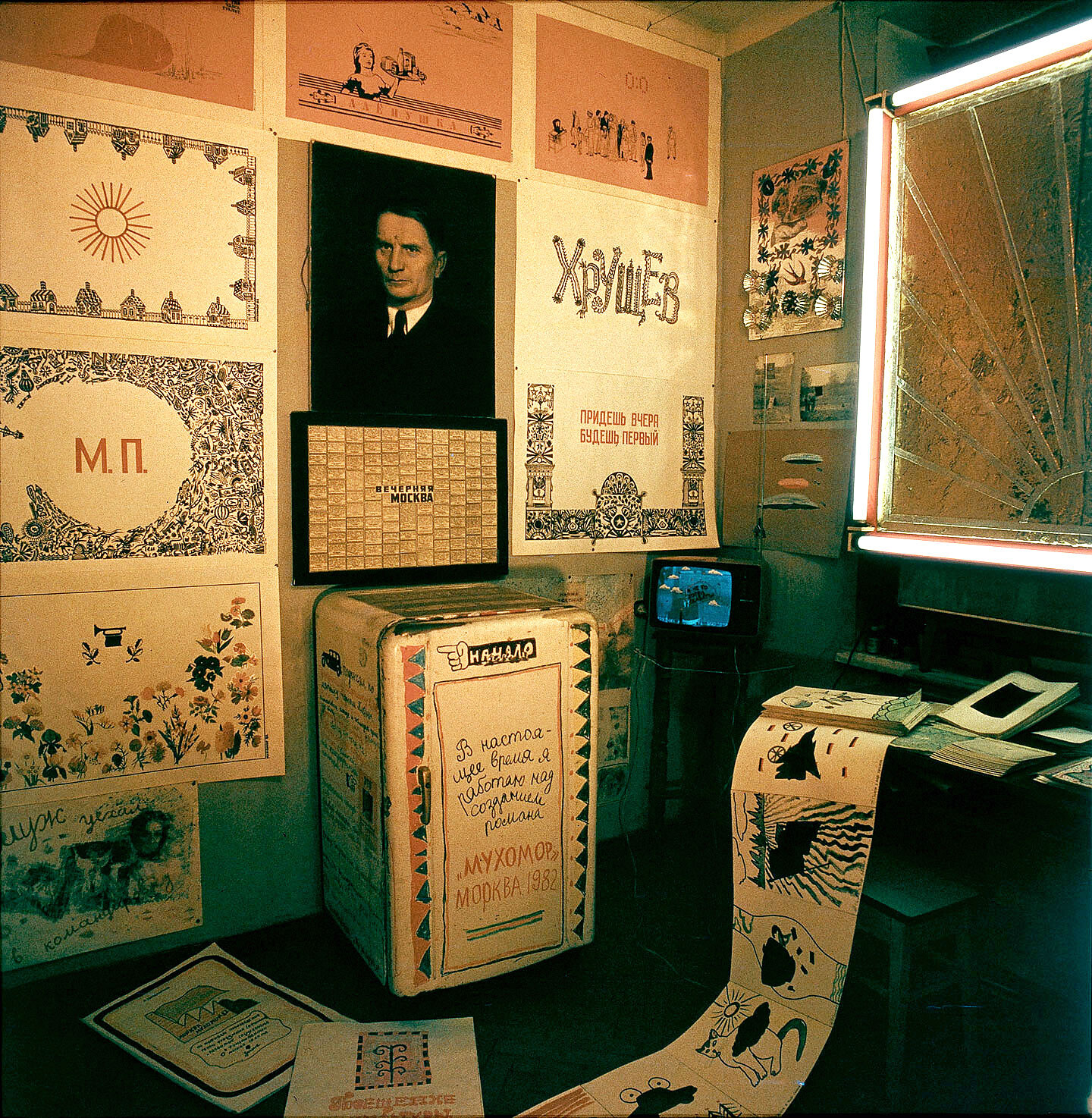

View of the first APTART exhibition, autumn 1982, with work by the Mukhomor group. Courtesy of Margarita and Victor Tupitsyn Archive.
Like its surroundings, the Novel-Refrigerator was in flux—people added to and subtracted from it, Alekseev continued to use it for food, and finally the KGB confiscated most of the textual components in a raid on the apartment. What’s left of the work is now preserved behind glass in the State Tretyakov Museum, attributed to Konstantin Zvezdochetov alone, who sees it in this desecrated state as a kind of sacral artifact, a mix of partial inscriptions and images—a relic of a more or less indecipherable time. Rather than an “art-life” divide, the fate of Novel-Refrigerator suggests the anti-shows as a kind of museological activism, a lived preservation of artworks, artifacts, objects, and ideas in their “living” states—sites of use, discussion, ritual, congregation.
There are a few paradoxes to unpack; as Gundlakh noted about the first show, “attention became focused on the work itself, which was simpler, more emotional, and, with the abolishment of commentary, more paradoxical.” The projects of APTART were collective, socially orientated, in domestic space (space that in Russia had been subject to forced collectivization post-1932, a policy which by the 1980s was being reversed), but the Moscow artists were skeptical of any kind of collectivist thinking. Their actions were ”public” but more or less closed and in the absence of a public sphere. In their case, the “grudging necessity” (as Margarita Tupitsyn has put it) of unofficial artists sharing art privately among their colleagues, outside the official infrastructure, was remade as a badge of ironic pride.
The anti-shows were also deliberately apolitical, or even anti-political. According to Alekseev and others, staying outside the field of politics was not mere pragmatism, but an artistic decision: the aim was only to exist within the allowed limits of the system (in the sense that it was not specifically forbidden to declare one’s apartment a gallery and extend an open invitation to visit). Despite such efforts, APTART was politicized by the authorities. In a letter to friends in New York, Alekseev wrote:
I am informing you with deep regret that APTART ceased to exist on 15 February 1983. Early in the morning of that day, the employees of a “well-known” organisation came with a search warrant and smashed the exhibition of [Victor] Skersis and [Vadim] Zakharov, confiscated some of the works along with other materials which were in no way anti-Soviet. On the same day Mikhail Roshal’s apartment was searched and his works and those of Mukhomors were expropriated. From the “employees’” remarks it was clear that they tend to interpret all works if not as anti-Soviet then pornographic or both … Most likely, this signals the beginning of a new campaign for complete extirpation of new art. If this is true, it is terrible. What shall happen next is unclear, but to expect anything good is unrealistic. It looks like we have become an eyesore to them since they seriously warned us back in September … I am not trying to “bury” myself and my friends yet but the atmosphere here is pretty awful.9
APTART actually continued for another year or so after this, coming to an end the year before Gorbachev took power in 1985. From that moment, the cultural landscape began its slow transformation. Nonconformist art activities and possibilities to hold exhibitions increased to the extent that artists began to experiment more widely with the exhibition format. (For example, the exhibition in the Sandunovsky bathhouse organized by Joseph Backstein and Gia Abramishvili.) Whether by chance or historical necessity, APTART was among the last unofficial apartment exhibitions in the “closed” Soviet era.
Much of their “apartment art” did not even take place in apartments. Following the KGB’s intervention, APTART’s actions moved outdoors. The cramped maximalism of Alekseev’s apartment opened into the Russian landscape. Just as the previous set of works were conceived for apartments, this set of works was conceived to appear en plein air—but not to transform a less cultural space into a more cultural one, or to compete with the scale of the outdoors (Russia, one-sixth of the world’s landmass, is largely nonurban space): “We deliberately scattered our works over a large space so that they did not stand out and did not destroy the peculiar beauty of the place.”10 For one event Manuel Alcayde constructed a “Russian Palm” in a wide-open field, vivid against the surrounding conifers—“a touch of tropicalism inspired by Russian folk patterns” and “a gift to the nature of that country.”
The point was also conviviality, and a kind of deep sociality. The outdoor gathering was a “Woodstock” and in general, “the shows were never shows … the most important thing was gathering in that tiny kitchen and talking and having a drink … socializing,” as Victor Skersis, one of the central participants in APTART, explains:
These small congregations are the most important entities in art … ideas come from individuals, and in group formations they have more chance for survival—they bounce from one mind to another, combining, developing information, a bigger context. And that’s what happened in APTART.
A 1975 action by Skersis’s earlier Gnedzo (Nest) group (with Mikhail Roshal and Gennadii Donskoi) involved the artists building a nest in the center of an official exhibition space—the Hall of Culture, at the Exhibition of Achievements of the National Economy—which they inhabited, surrounded by signs stating “Quiet! Experiment in progress!” A photo shows the young artists looking thoughtful, reading and hanging out with a young child atop the pile of leaves and sticks. The nest would become a point for visitors to linger, chat, or eat. As part of an officially sanctioned exhibition of “unofficial” art (following the two important unofficial public displays known as the “Bulldozer” and “Izmailovo” exhibitions the previous year), the action has been framed as ironic comment on the socialist economy—perhaps sensing this, the nest was ultimately destroyed by the Ministry of Culture. But this overlooks the function of Hatch Eggs! as a generous and generative communal space, a short-lived squat within official surroundings.
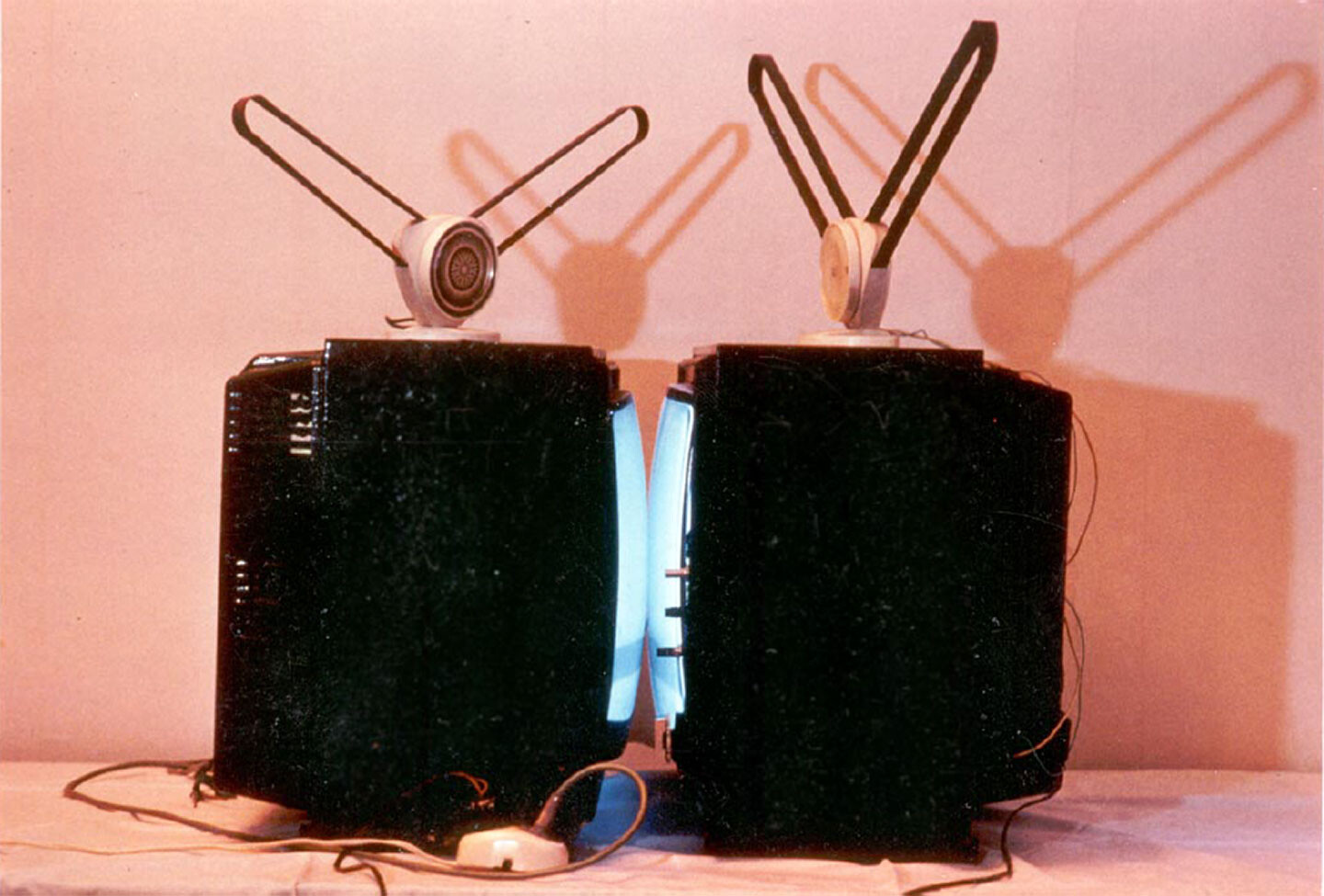

Mikhail Roshal, Art for Art’s Sake, 1982. Photo: Georgy Kiesewalter.
The Soviet communal apartment (kommunalka) was a cipher for other installations produced in Moscow in the 1980s—Kabakov’s installations such as The Man Who Flew into Space From His Room (1985) or Irena Nakhova’s Rooms (1983–87) series. In a parallel way, APTART’s anti-shows added a conceptual frame to the longstanding practice of apartment exhibitions: recognizing the conditions they inhabited as material for their art. Kabakov has written of visiting the first APTART show, seeing it not as a product of his younger Moscow contemporaries but as the creation of some other imagined author-figure, some unknown multiple personality. (Reading this text, it is also possible to see Kabakov recognizing his own ideas reflected back at him, transformed, within that apartment—Kabakov’s character-based installations began the following year.) But unlike the installations of Kabakov or Nakhova, or much earlier examples such as the 1972 apartment-installation by Komar and Melamid, whose work was relatively legible for outsiders in terms of their singularity of vision, APTART is more dense and contradictory in its accumulation of ideas. “Born in private apartments, private heads,” this was nonetheless “collective curating—curated collectively and also curated as an expression of a group,” as Yuri Albert, another APTART participant, explains.11 And with a specific scenography: bed in the center; novel-refrigerator; kitchen sink; TV.
Abalakova-Zhigalov make an explicit link to the collective actions of the Russian avant-garde at the opposite end of the Soviet era:
It was undoubtedly an ART MOVEMENT—perhaps the first in the twentieth century since the Russian AVANTGARDE. By “movement” I (we) understand some special historic situation which makes a group of artists with different personal interests some kind of undivided social body—a single whole.
At the same time, the various group-formations involved—TOTART, S/Z, the Mukhomors, Collective Actions, the Peppers—were not at all “predisposed to any sort of manifestation of collectivity the very idea of which is defiled by official propaganda.” The language of collective production, in the Soviet context, was cynical and suspect. Theirs was a kind of anti-collective collectivism. (And by no means unified: for Alekseev, they also did not constitute a movement, “except in a very very general sense.”)
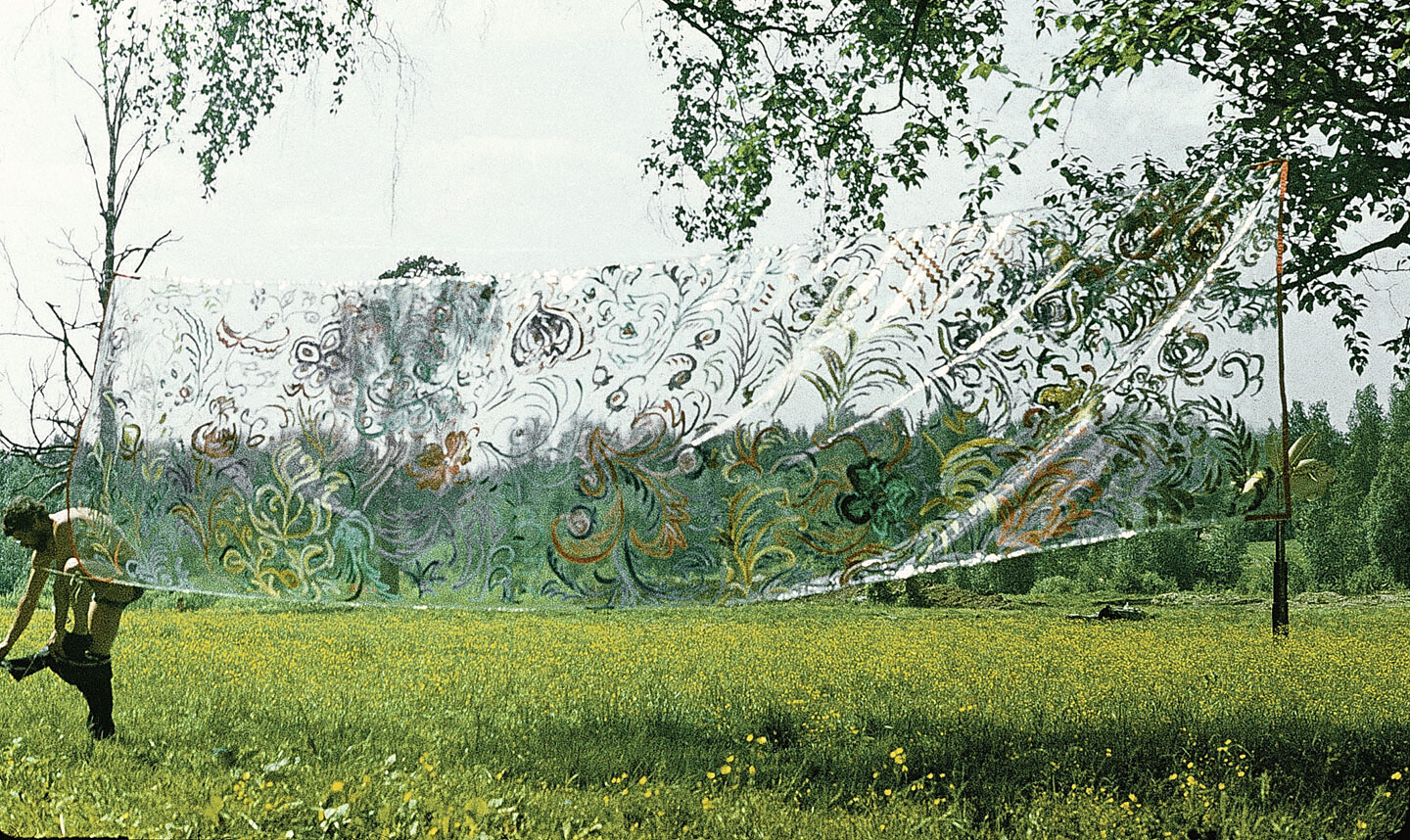

TOTART, Take Care of Art—Our Wealth, 1983, with Anatolii Zhigalov, at “APTART en plein air,” May 1983. Courtesy of Margarita and Victor Tupitsyn Archive.
What were the anti-shows against? The dominant system of official art is the most obvious answer, but it is not the only answer. To the extent they were “anti-” this system, they were also “for” a kind of anarchic, “low-culture,” junk aesthetics, in visible opposition to the elitist “high culture” found beyond the USSR. Vadim Zakharov, another key APTART participant, recalls that “when we started to create exhibitions in apartments or studios we never [intended] to make exhibitions—the main idea was to present works and [a] concept,” adding that the category “show” was not being used as it was in the Western tradition. But to turn Zakharov’s analysis on its head, “presenting works and a concept” sounds like an exhibition; whereas APTART may be understood as precisely anti-show—where “show” (commerce, superficiality, spectacle) corresponds with the dominant forms of exhibition in what was then the West.
There are other problems around Western categories. Neither the idea that domestic spaces are private spaces, nor the public/private dichotomy, can be assumed. “The identification of the home or dwelling with the realm of privacy is a relatively recent Western construction. Historically and geographically specific, it cannot be taken for granted in the context of socialism.”12 The idea of an audience, too, was for the artists akin to a phantom limb (to follow one of Albert’s metaphors). An aim of the emergent field of exhibition studies is to shift historical focus away from some moment of artistic “creation” and towards art’s becoming public, towards the many and multifarious collective formations (institutions, audiences, publications, discourses) that produce what we recognize as art. But received ideas of exhibitions, audiences, and publics may not be particularly relevant here. The closed circumstances produced an intense degree of connectivity—akin to the two television sets facing one another in one corner of Alekseev’s flat (Mikhail Roshal’s Art for Art’s Sake)—inaccessible for those outside its circuit.
After perestroika, there would be a conscious attempt to connect APTART with its “outsides.” APTART International (APTART INT), a separate project by Konstantin Zvezdochetov and others, referred to the history of apartment exhibitions more broadly. In an attempt to rekindle the “underground era” during the rapid commercialization of the early-’90s Russian art scene, Zvezdochetov, Elena Kiurliandtseva, and Victor Misiano invited artists including Octavian Trauttmansdorff, Franz West, Haralampi Oroschakov, and Heimo Zobernig to produce exhibitions in a rented apartment at 12 Leninsky Prospect, Moscow. The best known of these was IRWIN’s NSK Embassy: echoing the idea of “apartment art” as “nationality,” the apartment became a base for the “NSK State,” adorned with the coat of arms and state flag, inhabited by NSK personnel and used for public talks with visiting critics and artists.13 As APTART INT showed, and as research projects such as Parallel Chronologies, or the recent exhibition at Muzeum Sztuki in Łódź, “Notes From the Underground: Art and Alternative Music in Eastern Europe 1968–1994,” emphasize,14 the myriad microcultures of this era took place well beyond the centers of global power, and well outside their dominant narratives, very often along more modest, comunally focused, transgressive, or anti-systemic lines.
Today, might there be something to learn from such groupings: artists working outside market relations, within a more or less closed system, moreover a system in crisis? Although APTART happened at the beginning of the end of the USSR, at that time there was no end in sight; “very poor, grey, without hope, no future,” as Albert characterizes it. Rather than the “openness” and Uskoreniye (“acceleration”) under Gorbachev, APTART coincided exactly with the two-year tenure of Iury Andropov—the former KGB chief famous for his leading role in the violent suppression of the 1956 Hungarian Revolution and the Prague Spring, who took over after Brezhnev’s death in 1982. APTART was a circumvention of a dominant system, at a moment of stasis, with no end in sight—right before its sudden collapse.


Nikolai Panitkov and Mikail Roshal at the first APTART exhibition, autumn 1982.
As Alekseev reflects, “you could be part of [the art system] but you had to accept its rules—and that wasn’t interesting to us.” What would be the contemporary equivalent of “official art,” in relation to the art system today? What is known as “contemporary art” seems not to obey any one program, and generally faces no particular restrictions (with important local variations) except perhaps “art that looks like art.” Contravening its internal “rules” is usually an asset. Instead of the valuable items found within today’s vast complex of galleries, museums, art fairs, auction houses, and offshore storage bunkers, “official art” might be more accurately characterized as the whole complex of things recognizable as “art”: the discursive and performative projects, the parasitic, para-institutional, and educational practices, the schools, seminars, events, and exhibitions, and the people who attend, think, and talk about them. The opposition to this world, our contemporary “anti-shows,” might then be more easily located in the conflicts on its edges, especially those that speak to ongoing structural violences. For example, community-led shutdowns of art spaces, whether because of their use as fascist meeting points or—more pertinently for a discussion of apartment practices—for their gentrifying function.15 On the other hand, much of unofficial art was not directly antagonistic, and more a way of working with and within its system’s restrictions. “It’s possible to work without public, state, museums, market, and if you’re lucky you can recognize it as the material of your art,” explains Albert. “But it’s very difficult.”
For his part, when Manuel Alcayde returned to Cuba in 1984 he found echoes of the Moscow tertulias in the collective work of a younger generation of artists. Grupo Puré, Grupo Provisional, Arte Calle, and other groups variously ignored, evaded, or confronted the nascent state policy. They were, in Alcayde’s words, “a generation that showed a vision that was less vernacular and more universal, which also became more conscious of its social role and critical potential.” Arriving in New York in 1984, Skersis recognized similar energies in the squats of the East Village, activist spaces like ABC No Rio, and DIY exhibitions such as “Times Square Show.”16 Albert makes a comparison between the Soviet context and Latin America, which also suggests parallels with groups such as Grupo Chaclacayo (GC). Formed around 1982–83 by Raúl Avellaneda, Helmut Psotta, and Sergio Zevallosalso, GC staged collective-artistic transgressions in the domestic space of a rented house on the outskirts of Lima. The “shocking sarcasm, sexual disobedience, belligerent statements, and junk aesthetics” that Miguel Lopez ascribes to the emerging anarcho-punk, experimental, and DIY cultural scene in the city, as well its ambivalence and antagonism towards established socialist parties and its embrace of a younger, cultural left in the context of state violence and persecution, could be equally applied to APTART.17 Certainly there are discontinuities between Lima and Moscow, as there were between Moscow and New York (a more frequent comparison), or Moscow and other locations in the Eastern Bloc, or even Moscow and Moscow, in its official and unofficial guises. But as Alekseev notes: “things happen simultaneously.”
Vadim Zakharov has continued to organize apartment exhibitions as part of an art practice that self-institutionalizes on various levels (as critic, archive, curator, historian, gallery, etc.). Even if the conditions of organizing in an apartment in 2010s Berlin are incomparable to 1980s Moscow, for Zakharov it is still “maybe a bit in opposition to the art system,” by allowing artists to take a more active position. Working artist-to-artist, doing everything oneself, working in nonindividuated ways, and keeping a distance from selling are the kinds of freedom to be learned from the microculture of 1980s Moscow. Zakharov writes:
When I speak to students in Russia [about this period], they always say “there’s one thing we don’t understand—your works look free, not like they were created in a cage.” The art system doesn’t want to accept the freedom, I would like to say, of artists. This is maybe strange to say from my side, to you, but too many freedoms in artists’ positions are not really viable today.
A text advertising a public discussion with Alekseev hosted by the Garage Museum of Contemporary Art—a museum in Gorky Park founded on the private wealth and art collections of Roman Abramovic and Dasha Zhukova—writes that APTART “is now considered to be the first Russian private art gallery.”18 Here APTART appears as a precursor to an entrepreneurial culture of startup galleries in growing economies, where cultural formations are only ever able to emerge in anticipation of a commercial infrastructure to come. But for Alekseev, speaking to me this year, APTART’s importance was precisely an escape from dominant conditions: “a small space where we could work and function and communicate … a parallel world.”
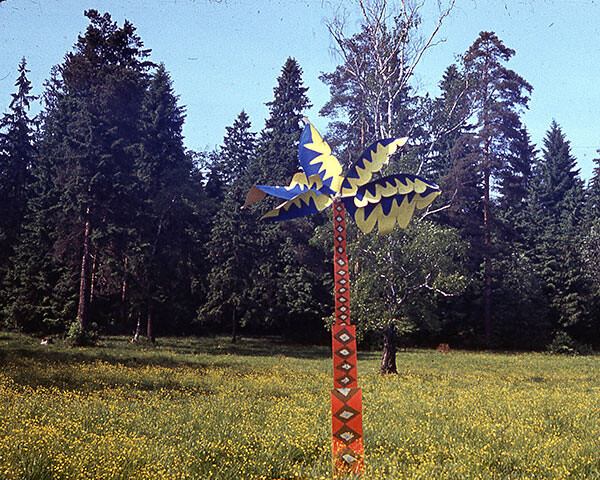

Work by Manuel Alcayde at “APTART en plein air,” May 1983. Courtesy of Margarita and Victor Tupitsyn Archive.
Speaking today, the artists have different understandings of the anti-show concept. As Alekseev notes, “Perhaps it was ‘anti’ concerning official exhibitions but I would rather prefer ‘parallel.’ This notion of being off of official universe, existing in our parallel reality was more important than simply being against.” Albert is more questioning:
Anti what kind of shows? We were absolutely indifferent to official exhibitions … [and] there were no exhibitions of contemporary art to which we could be “anti.” Maybe there was an opposition to apartment shows by the older generation, but it was opposition in the very small circle.
In relation to his own practice, Albert suggests instead the term “meta-shows.” (The contemporary reincarnation of Walter Benjamin, who first appeared in Ljubljana in 1986, and Victor Skersis have also both recently theorized variant forms of “meta-art.”) And for Abalakova and Zhigalov it relates to the fact that
the space of the flat came to be dynamic, interactive, and dialogical or perhaps even polylogical. Due to spontaneous approach to installation of the material (which was predominantly essentially immaterial) this “minigallery” happened to be the experimental playground where new forms of expression—a mutual enrichment of “knots” and “grains” was suggested to the audience. And all worked all right on all levels—installationally, performatively—mad tea-drinking of texts, objects, drawings, photos etc. That’s what we (TOTART—Total Art Action) meant by “anti-show” with the accent on new form (its hidden radical immateriality).
It is not so much that the idea of “anti-show” collapses the old oppositions of public-private, art-life, autonomy-nonautonomy (as might be said about sympathetic practices elsewhere in the world)—it is more that these anti-shows emerge in a situation where such binaries mean little: as conceptual frames they are not useful, and maybe even misleading. “Anti-show,” then, describes a phenomenon in terms of what it resembles, but isn’t; a thing awaiting a more precise conceptual language. Similarly in the case of collectivism and anti-collectivism: perhaps there are better ways to think about the deep interdependency, conversation, and cooperation that art entails; perhaps APTART would be better understood via a methodology of friendship, “teamwork,” or a “non-aggression and mutual assistance pact” (as Abalakova and Zhigalov put it). Skersis does not recall the term “anti-show” specifically, but for him
the situation was a given with no need for a regretful term. And now I clearly see that our curse was a blessing. What was done in APTART could not have been done in an official or a commercial space … The purpose of a show in a Western gallery is primarily to show the completed works of an artist to the public. Truly it is a very archaic situation, where artworks broadcast conserved messages from a patriarchal figure behind the scenes to the congregation. On the other hand, in the closely knit community, as APTART was, the purpose of a show was for the collective to assemble and discuss the common subject, which made APTART work more like a lab than a museum.
As a movement or a gallery, if it can be named as either, it was a construction; its “public” was self-reflexive, a fantasy or phantom limb—even its producers were sometimes fictional. It arrived at the end of something, not at the start—a culmination of socialist apartment practices, not an inauguration. It is as a construction, a fiction, or model, perhaps, that the anti-shows gain their focus—an artist-to-artist “proto-institution”; as with much of Moscow conceptualism, as Albert has put it, the function was to produce models. The model APTART produced was mobile, unstable, and under constant threat, created via complex forms of intergenerational sociality and cohabitation (with both persons and objects) in a situation where the commercial art world was an irrelevant, distant fiction. For Manuel Alcayde, “it was a trip to the future”—a future that, today, still feels a long way off.
Manuel Alcayde, email conversation, 2017. Except where noted, direct quotations are taken from conversations and email exchanges with the artists during January and February 2017.
Luis Camnitzer, New Art of Cuba (Austin: University of Texas Press, 2003), 168.
Sven Gundlakh, “The Show Must Go On” (1983), in Anti-Shows: APTART 1982–84, eds. Margarita Tupitsyn, Victor Tupitsyn, and David Morris (London: Afterall Books, 2017).
As quoted by Myroslava M. Mudrak, “Lost in the widening cracks and now resurfaced: Dissidence in Ukranian painting,” in Nonconformist Art: The Soviet experience 1956–1986, eds. Alla Rosenfeld and Norton T. Dodge (London: Thames and Hudson, 1995), 137.
According to the account of Kornely Zelinsky, held in the Russian State Archive for Literature and Art (RGALI), folder 1604, cited in Robert H. McNeal, Stalin: Man and Ruler (London: Macmillan, 1988), 154.
The Museum of American Art, itself housed since 2004 in an east Berlin apartment block, has done much work to reconstruct these specific environments and analyze these dynamics. I am grateful to the technical assistant of the Museum for conversations that informed the present text.
Sven Gundlakh, “Pictures from an Exhibition,” A–Ya magazine 5 (1983).
The artists add: “There is another reading of this object-text—explicit to any Soviet onlooker; Seva Nekrasov, a poet and essayist of the MANI circle, called our Chair the best formula of Soviet reality he ever knew. That is the very essence of the Soviet form of Socialism or collectivism if you like: nothing belongs to you because it always belongs to everyone—that is, to nobody. ‘I’ vs. ‘WE,’ where ‘WE’ does not exist because of a lack of ‘I’ while ‘I’ cannot be realized because of the lack of ‘WE.’ In other words, ‘only the dead know Brooklyn.’”
N. Alekseev, letter to Margarita and Victor Tupitsyn, February 18, 1983. Archive of M. and V. Tupitsyn.
Gundlakh, “The Show Must Go On.”
An apartment show held in Albert’s apartment in 1979 gathered together all the main participants of APTART.
David Crowley and Susan E. Reid, “Socialist Spaces: Sites of Everyday Life in the Eastern Bloc,” in Socialist Spaces: Sites of Everyday Life in the Eastern Bloc, eds. D. Crowley and S. E. Reid (Oxford: Berg, 2002), 13.
They invited contributions from Novi Kolektivizem, Goran Đorđević, Mladen Stlinović and Milivoj Bijelić, Laibach, Retrovision, and Kozmokineticni kabinet Noordung.
See “Parallel Chronologies: An Archive of East European Exhibitions,” available at →; and Notatki z Podziemia / Notes From the Underground, ed. David Crowley and Daniel Muzyczuk (Łódź: Muzeum Sztuki, 2016).
For an example of the former, see Shut Down LD50 Gallery, in London →; for the latter, see Boyle Heights Aliana Anti Artwashing Y Desplazamiento (Boyle Heights Alliance Against Artwashing and Displacement), in Los Angeles →; or see the various anti-gentrification alliances and strategies developed by Collective Research Initiatives Trust (CRIT) in Mumbai →.
The flow of information here was asymmetrical: New York artists, critics, and curators would have been aware of APTART by the mid-’80s (largely through the advocacy of Margarita and Victor Tupitsyn), but New York’s underground art scene—as well as Havana’s—was more or less off the radar of Moscow artists.
Miguel A. Lopez, “Discarded Knowledge: Peripheral Bodies and Clandestine Signals in the 1980s War in Peru,” trans. Megan Hanley, in Removed from the Crowd: Unexpected Encounters I, eds. Ivana Bago, Antonia Majača, and Vesna Vukovič (Zagreb: BLOK, 2011), 116.
See →.
A version of this text will appear in the forthcoming book Anti-Shows: APTART 1982–84, edited by Margarita Tupitsyn, Victor Tupitsyn, and David Morris, published in the Exhibition Histories series by Afterall Books in association with the Center for Curatorial Studies at Bard College.
